"All one can really leave one's children is what's inside their heads. Education, in other words, and not earthly possessions, is the ultimate legacy, the only thing that cannot be taken away." -Wernher von Braun
After another outstanding week here at Starts With A Bang, it's time to take a detailed look at what you've had to say about everything we've talked about. From the expanding Universe to galaxies near and far, to the future of NASA and more, here's the weekly recap, just in case you missed anything (or want a second look):
- Why does light stretch as the Universe expands? (for Ask Ethan),
- Best domino runs in the world (for our Weekend Diversion),
- The globular that almost didn't make it, M107 (for Messier Monday),
- The disappearing Universe,
- NASA's budget 'victory' is anything but, and
- The greatest beard in astronomy's history (for Throwback Thursday).
Especially when it came to the disappearing Universe, you had an awful lot to chime in about. So let's jump on in to your Comments of the Week!
Image credit: Cyanide and Happiness, via http://explosm.net/.
From Jack on the topic of light stretching in an expanding Universe: "If I have a meter stick and watch if for a very long time (while space expands), I would be tempted to assume that it is still a meter long. And if I find any other meter stick of the same age, they will all appear to be the same length, yes? But if I get a new meter stick, defined by so many waves of sodium light or whatever, only then will I realize that the old meter sticks are all too long. Yes?"
This is a point that, I agree, many people achieve a high level of confusion about when they first start thinking about it. Here's what you have to remember: if you have a sodium atom (or any atom), and you excite it and then let it spontaneously de-excite it's always going to emit a photon of the same particular wavelength (or set of wavelengths) no matter where or when you have it do so in the Universe. This is because, to the best we can tell, the laws of physics do not change dependent on your location in either space or time in this Universe.
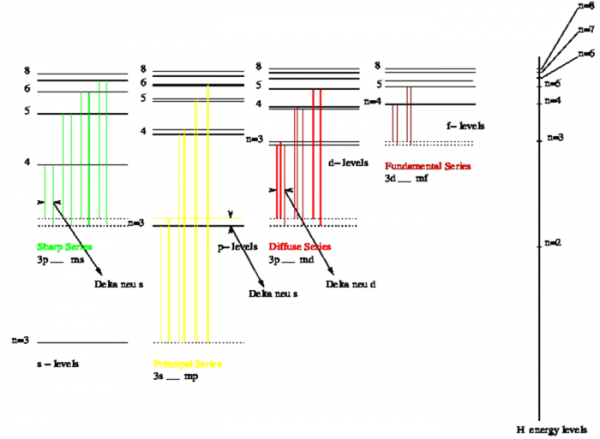 Image credit: public domain image from ICT, via user DNPatel1, at http://ictwiki.iitk.ernet.in/wiki/index.php/File:Chapter_2b_figure_1.png.
Image credit: public domain image from ICT, via user DNPatel1, at http://ictwiki.iitk.ernet.in/wiki/index.php/File:Chapter_2b_figure_1.png.
If a sodium atom on Earth emitted light a billion light years ago, and the light travels through the expanding Universe, that light will, in fact, get redshifted. But the meter stick here on Earth will not have changed. The Universe has expanded, but the Earth hasn't nor has anything that's been bound together either electromagnetically (like a meter stick) or gravitationally (like the planets). The expanding Universe only affects unbound systems, like individual photons. My apologies for not specifying that "bound" systems include those bound by electromagnetism, not merely those bound by gravity.
From Peter on the same topic: "My question is, if photons traveling through expanding space already, and their wavelength shifts down, does the energy from the photon “get absorbed” by the expanding spacetime or something to that effect."
The cop-out answer is that, in a strict sense, energy is not defined in General Relativity. Now that we've satisfied the technical nitpickers, you are asking where the photon energy goes; the answer is that the Universe, as it expands (or contracts), does work on the photon! If you were okay with the analogy of matter/antimatter annihilating in a changing gravitational field as a compelling reason why gravitational redshift (for photons) needed to be real, consider the gravitational potential of the entire Universe a long time ago, when it was in a denser state, and today, when it's more spread out. The only way to balance the energy content is to have the photons redshift as the Universe expands (or blueshift as it contracts). And if you need an explanation of how energy is conserved in a Universe with dark energy, you may want to have a go at this piece.
From Ciaran on the best domino runs in the world: "Have you seen this video of domino logic gates being used for 4-bit addition? Very cool."
The video is above, for anyone interested (and it is cool), and I'll also encourage you to have a look at Harold's suggested video explaining more on the same subject, if you want to learn more about domino computing.
From unclemonty on the globular cluster we looked at for Messier Monday: "So from your figures in the long article, a very rough estimate is that stars in M 107 get allotted less than 1.5 cubic light-years each, on average. How serious are the implications for solar systems in places like this, compared to our solar system? Stars in a globular cluster will have relatively little room for analogs to the Oort cloud, for example."
When you look at the above image, or think about stars in general, you think about these huge timescale (billions of years), you think about the tremendous number of chances of a gravitational interaction, and you start to worry about whether planetary orbits might have a good chance of being perturbed. The thing I want you to think about is how big a light-year is and how small the Earth-Sun distance is, by comparison: they differ by a factor of 63,000. This means if I shot our Solar System through a dense region of space, where the density was one star per cubic light-year, at a speed of (let's just pick a number) 200 km/s, I could compute how long, on average, it would take for another star to come within one AU of the Sun.
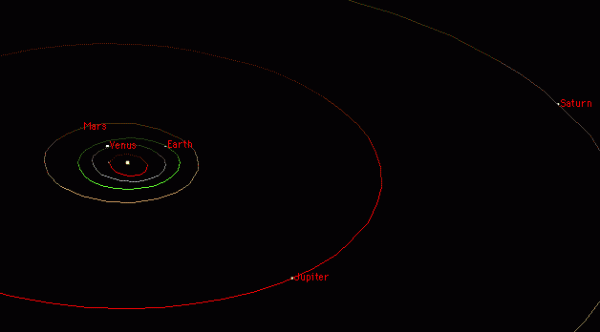 Image credit: James Schombert of University of Oregon, via http://abyss.uoregon.edu/~js/ast121/lectures/lec24.html.
Image credit: James Schombert of University of Oregon, via http://abyss.uoregon.edu/~js/ast121/lectures/lec24.html.
The answer? About two trillion years. So yes, the Oort cloud might be disrupted in a matter of hundreds of years in an environment like this, and a Pluto-like Kuiper belt object might only last a billion years on average, but of the hundreds of thousands of stars in a cluster like this, less than a thousand have had their inner solar system disrupted. Now places like this might be more violent, with more asteroid-like and comet-like bodies likely to collide with you, but planets should still orbit their stars just fine. Is life more, less, or equally likely in an environment like this? We don't know enough to say.
Now, for the big one: let's see what you've had to say about the Disappearing Universe!
From Sinisa Lazarek: "Isn’t the future dictated by what exactly is Dark Energy? If it’s vacuum energy then yes, it will expand forever and we’ll only be left with Virgo Cluster. If you model vacuum energy so it can decay, then it’s not the same picture any longer."
This is true; but you must remember that when we speak about our Universe, we have to go with the Universe we have and know to the best of our understanding. Yes, dark energy might not be what we think it is, but our best observations and our best (and simplest!) theoretical models all indicate that it is pure vacuum energy / cosmological constant / non-evolving dark energy with equation of state w=-1, exactly. There may be new physics and dark energy may do something else, but there are no good reasons, either theoretical or observational or experimental, to indicate that this is the case. So let's keep an open mind, but let's confidently go with the simplest model -- vacuum energy, as you say -- when making predictions.
From Don (and others): "There’s a fundamental mistake in this article, isn’t there? “If something is receding from us right now at more than 299,792.458 km/s — faster than light speed ”. And on that is the idea that not even a beam of light would ever reach that something. But “something” CANNOT travel even AT light speed, much less faster than light speed. So why would it be unreachable? Am I missing something here?"
Unfortunately, yes. Special relativity states that no two objects can have relative motion to one another at speeds greater than speed-of-light in a vacuum. But general relativity -- which encompasses special relativity -- states the same thing and also that the space in our Universe is not constant, and can be curved, and can expand or contract, etc. The galaxies we're talking about have velocities that are only hundreds or thousands of km/s relative to the stationary frame of the cosmic microwave background, so they're not violating special relativity at all. But they are in an expanding Universe, and the rate that space expands has been measured to be about 68 km/s/Mpc. So what's moving away from us faster than 299,792.458 km/s? Any object more than about 4,400 Mpc (or 14.4 billion light-years) away from us, because the galaxies aren't just moving through space, the space between us and them is expanding.
Image credit: Tony Hallas of Astrophoto.com, via http://apod.nasa.gov/apod/ap070719.html.
From squid_hunt: "Why is it incredibly frightening that galaxies are slipping out of our reach? They’ve always been out of our reach and likely always would have been (Particularly as individuals), so while impressive, how does it affect us?"
As time goes on, the expansion rate isn't dropping very much. But these galaxies are getting farther and farther away. 13.8 billion years ago, all the galaxies were reachable by a photon that we could've sent. 7 billion years ago, almost all the galaxies were still reachable, too. But by this point, only about 3% still are, and if we wait another 13.8 billion years, less than 1% will be. If we wait ten times that -- around 138 billion years -- only maybe a dozen or so galaxies will still be within our reach, as the expansion carries them farther and farther away. I think that affects us... don't you?
Image credit: NASA & ESA, via http://www.spacetelescope.org/images/opo9919k/.
And from Beeky: "I don’t quite understand the “acceleration” part of this phenomenon. Could someone explain?"
So you've got this expansion rate today -- 68 km/s/Mpc -- and it's continuing to slow down. Maybe someday in the future, it will asymptote to around 50 km/s/Mpc. But pick an individual galaxy that 10 Mpc away right now; it's receding at 680 km/s from our point-of-view. Billions of years from now, because the Universe is expanding, it's going to be 20 Mpc away from us. The expansion rate will have dropped to 50 km/s/Mpc, but now it's farther, and will be receding at 1,000 km/s. The fact that its recession speed went up is what's accelerating! If you go back to the original article, you'll see that there were four cases: recollapsing, critical, coasting, and accelerating. In a recollapsing Universe, the speed of every galaxy becomes negative; in a critical one, it drops to zero; in a coasting one, it drops to some constant value (it gets farther away, but the expansion rate keeps dropping); and in an accelerating one, it keeps going up!
And now, onto our final comment of the week:
Image credit: NASA, via http://www.esa.int/spaceinimages/Images/2013/01/Orion6.
From John Baker on the subject of NASA's budget: "I have supported space investments for over fifty years and completely agree with all your points. The amount of money spent on space science is minuscule compared to major budget items like Medicare or public pensions yet many seem to think these modest programs are the cause of our 500+ billion dollar deficits. I’ve long since given up arguing with the “arithmetically impaired” which is one of the reasons I am a big fan of your brilliant blog. Your willingness to entertain the notion that the public can actually be educated is naively inspiring."
I knew it was naive when I wrote it. I'm glad you found it inspiring; I'm not sure exactly how we're going to get there -- to the point where we really do start investing appropriately in advancing towards the goal of bettering our knowledge, understanding, and capabilities of living better -- but I know it's a question of when, not if. This was the same question faced by NASA in the 1960s when we actually were investing considerable sums of money into exploring our Universe; the answer hasn't changed, but our world's policy and priorities have. Humanity is us. It's up to us to move it in the direction it needs to go.
Thanks for joining me, and thanks for a great week!

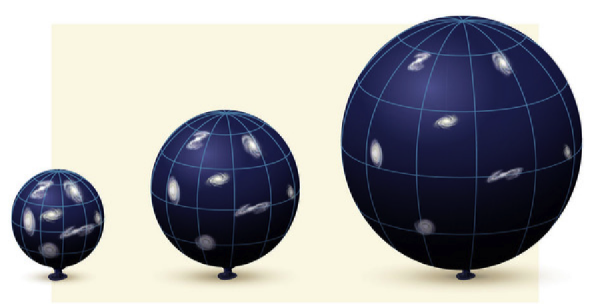
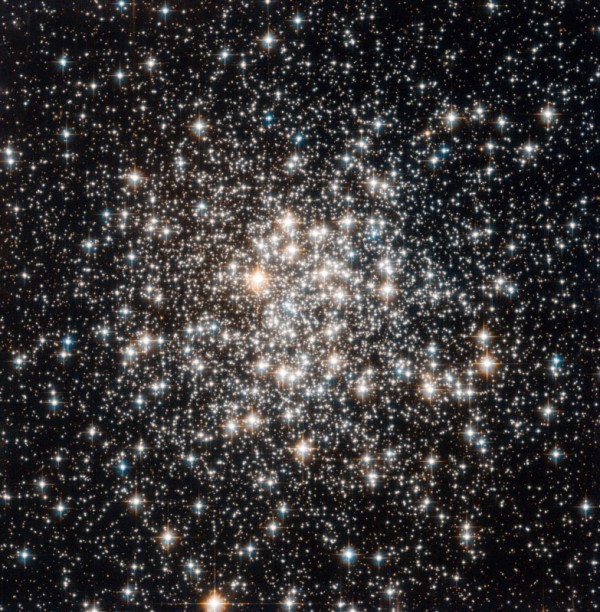
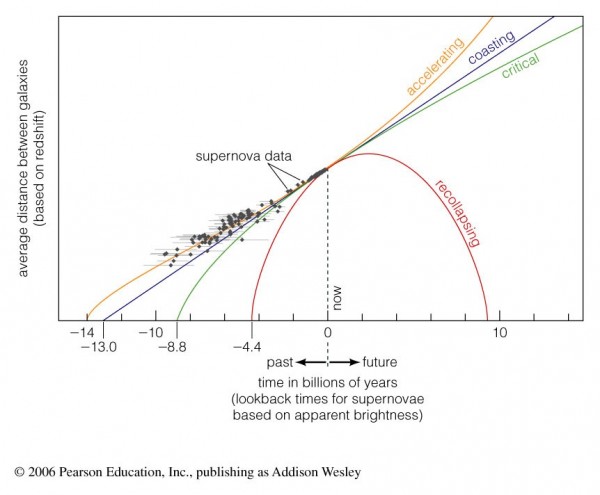

The problem I have with the red-shift theory is that the observed data is billions of years old, some 13.4 (approx.) billion years old. That does not tell us what those distant objects are doing now... [~;
@Elliot Siemon #1: Obviously, nothing can tell what those distant objects "are doing now," since it obviously takes a finite amount of time for any informational signal to travel from those objects to here.
What Hubble's law _does_ tell us is that there are two possibilities for the structure of the Universe: (1) We are in a magical, specially privileged position in the Universe, and everything else is the whole Universe is running away from us as fast as they can (and the longer they've been runnning, the faster they go); or (2) space is expanding at a uniform rate everywhere, such that we see galaxies farther away receding from us faster (and so woul any other observer anywhere).
I think you have to be really careful with this:
"The Universe has expanded, but the Earth hasn’t nor has anything that’s been bound together either electromagnetically (like a meter stick) or gravitationally (like the planets). The expanding Universe only affects unbound systems, like individual photons."
It makes it sound like if you suddenly removed the electromagnetic and gravitational forces acting on your meter stick, it would suddenly rejoin the expansion of the universe (the Hubble flow). It wouldn't, any more than if you caught a baseball and released it, it would resume its previous trajectory. From our point of view the meter stick has 'lost its history' of being part of the expansion.
Peacock discusses this in "A diatribe on expanding space" - http://www.roe.ac.uk/~jap/book/expandspace.pdf and Bunn and Hogg are also quite clear about it - http://arxiv.org/pdf/0808.1081v2.pdf
Discussing exactly what happens in detail gets difficult because we don't have a solution to GR that exactly describes our situation down here on Earth in the context of the wider universe perhaps, and its further complicated by us apparently having a cosmological constant everywhere perhaps, but I think it is important to note that while it is gravitational effects from our local overdensities that got our matter here to drop out of the Hubble flow, it isn't those forces or electromagnetic ones that are *keeping* matter from rejoining the flow.
It would probably be ok to say that because the universe is accelerating, if we set up an unbound system in an appropriate bit of space it would feel that acceleration, but the majority of the universe's current expansion derives from the early state of the universe as expanding, not the current late-time acceleration, and the current expansion rate isn't felt by our new unbound system.
@ Edd
I think you have to be really careful about Bunn's views. His views on how to do things within GR framework are very iffy.. talk about threading water to ones own mill.
Decomposing redshift to gravitational and kinetic part is not needed in the first place. And very interesting he always avoids uzing redshift larger than 2 - 3 because at large separations his kinematic view just goes >c .... and then he talks about how people missinterpret GR.. lol
Well I'm not terribly concerned by how best to describe a particular agreed upon observable result (redshift). I mean only to comment on whether objects on our everyday physical scale are held together against a continuing Hubble flow by physical forces right now, and I don't think they are and it's not a good idea to use phrasing that leads credence to that.
@ Edd
concerned or not, your "interpretation" is wrong. Because every object, be it a photon, an atom or a planet is affected in the same way by Lambda. The only difference between a photon and an atom is that atom has other forces acting on it (EM, weak and strong nuclear forces) and a free traveling photon doesn't. And if Lambda is the only force, then objects will be "carried" away from one another as Lambda is working on spacetime itself. We are not talking just about rising metric, we are talking about a field that acts on a metric.
Sinisa, I would appreciate it very much if you would read my comments more carefully before suggesting my interpretation is wrong. You said:
"Because every object, be it a photon, an atom or a planet is affected in the same way by Lambda."
I'd said before that:
"It would probably be ok to say that because the universe is accelerating, if we set up an unbound system in an appropriate bit of space it would feel that acceleration, but the majority of the universe’s current expansion derives from the early state of the universe as expanding, not the current late-time acceleration, and the current expansion rate isn’t felt by our new unbound system."
which is in agreement with that. (I should have left the 'probably' out - I'll admit that)
@ Edd
in your #3 post you do in fact say several things which are wrong, or at least non sense.
"From our point of view the meter stick has ‘lost its history’ of being part of the expansion." - absolutely wrong. Lambda has nothing to with light cones. It acts right now in every single point of space. And it's density NOW right here in your room is about 10−29 g/cm3
As for acceleration of expansion that has been dominating from about 7-8 billion years till now... if there was accelerated expansion in early days, 1-2 billion years after BB, the structure formation would be very different.
you say " but I think it is important to note that while it is gravitational effects from our local overdensities that got our matter here to drop out of the Hubble flow,"
again.. nothing dropped from the flow. we are not "outside" spacetime, we are within it. But different forces act on spacetime and it behaves according to them.. lamba, EM, and all else.
You are mixing metric expansion and accelerated expansion, either by not understanding the difference, or intentionally twisting the terms to suite someone's pet theory.